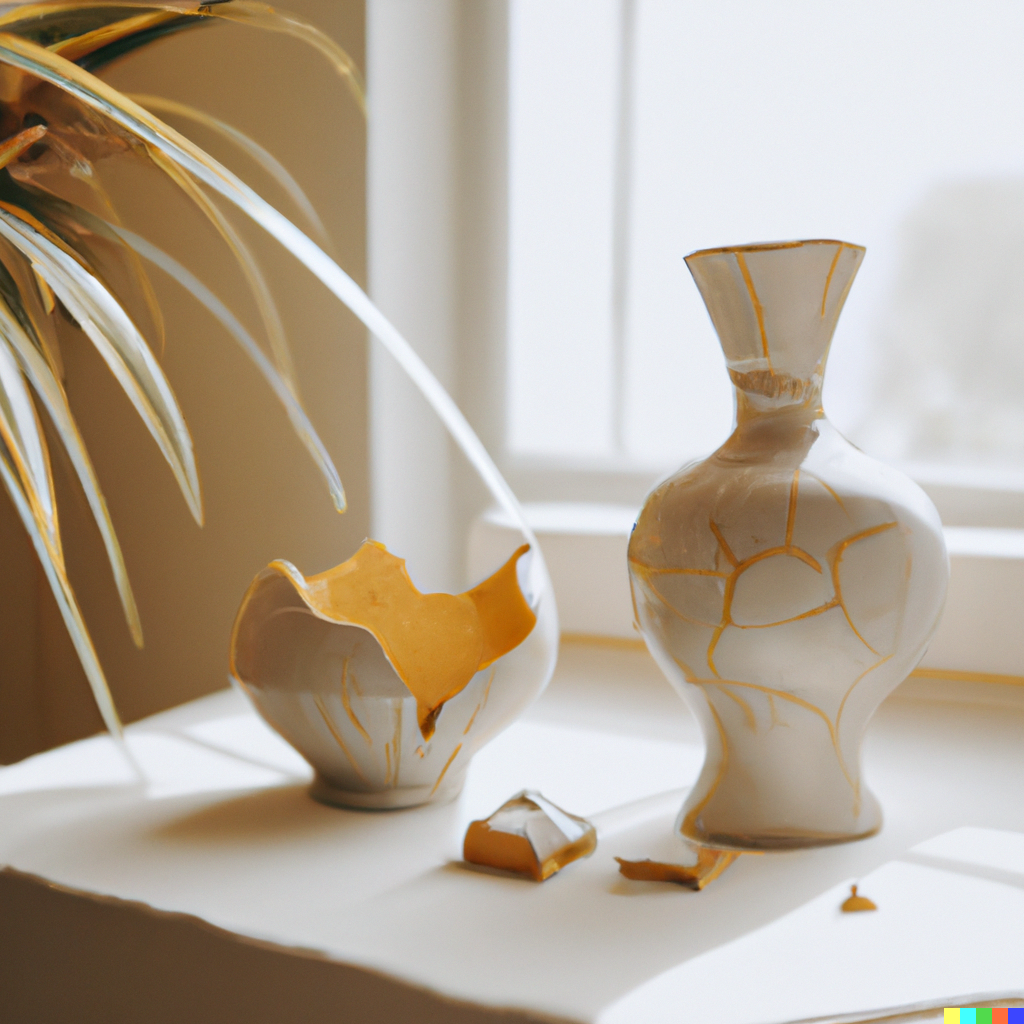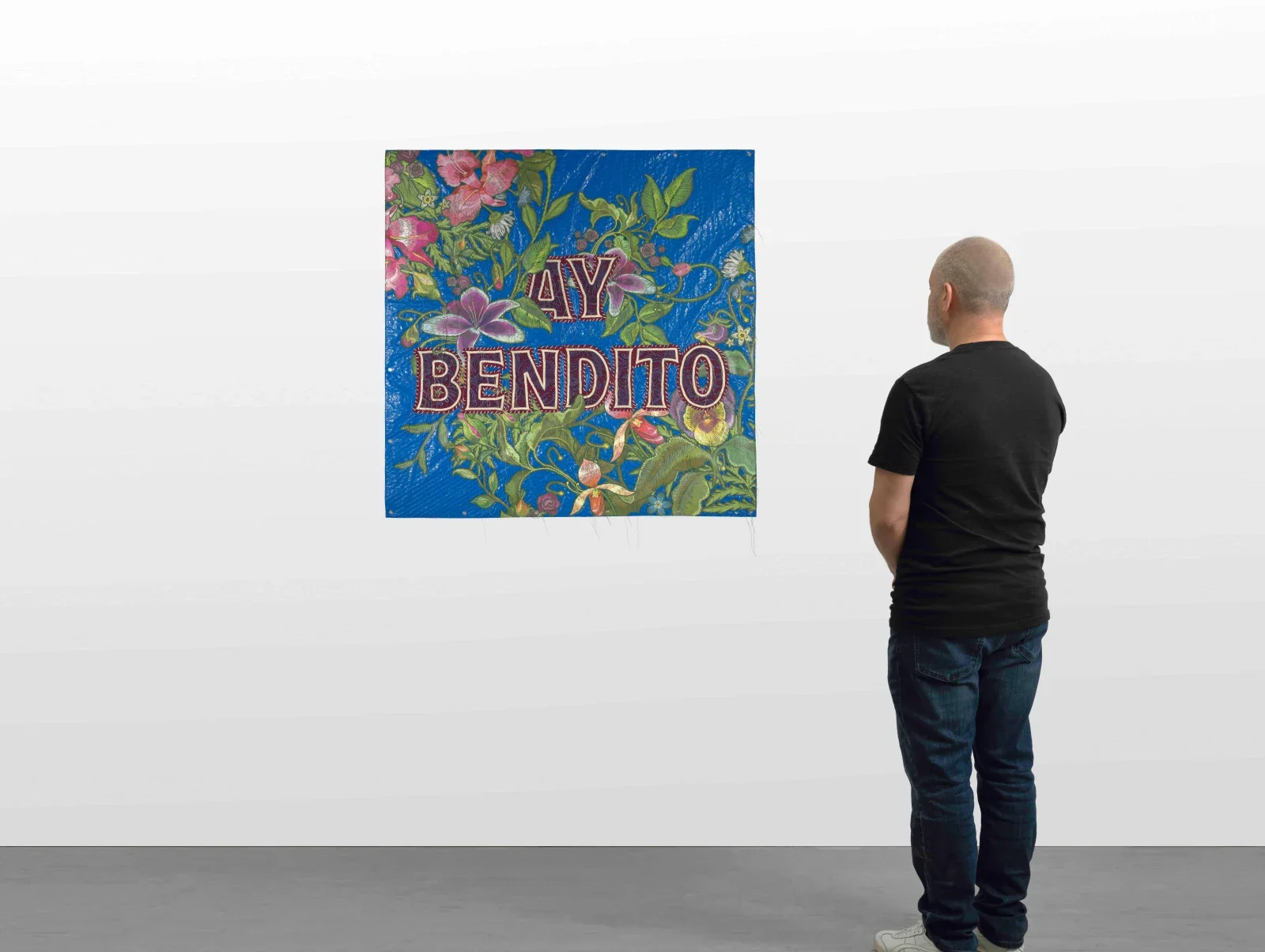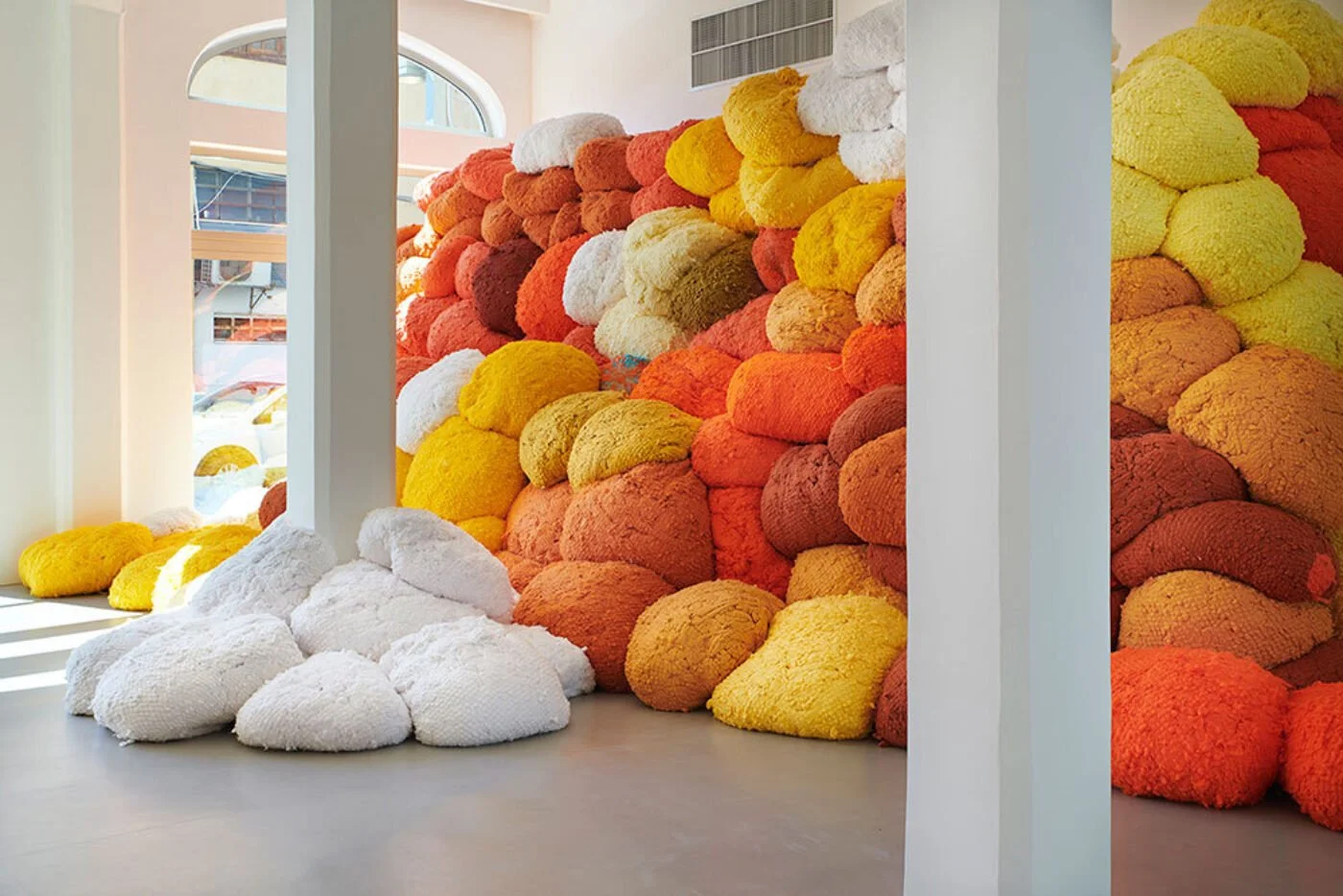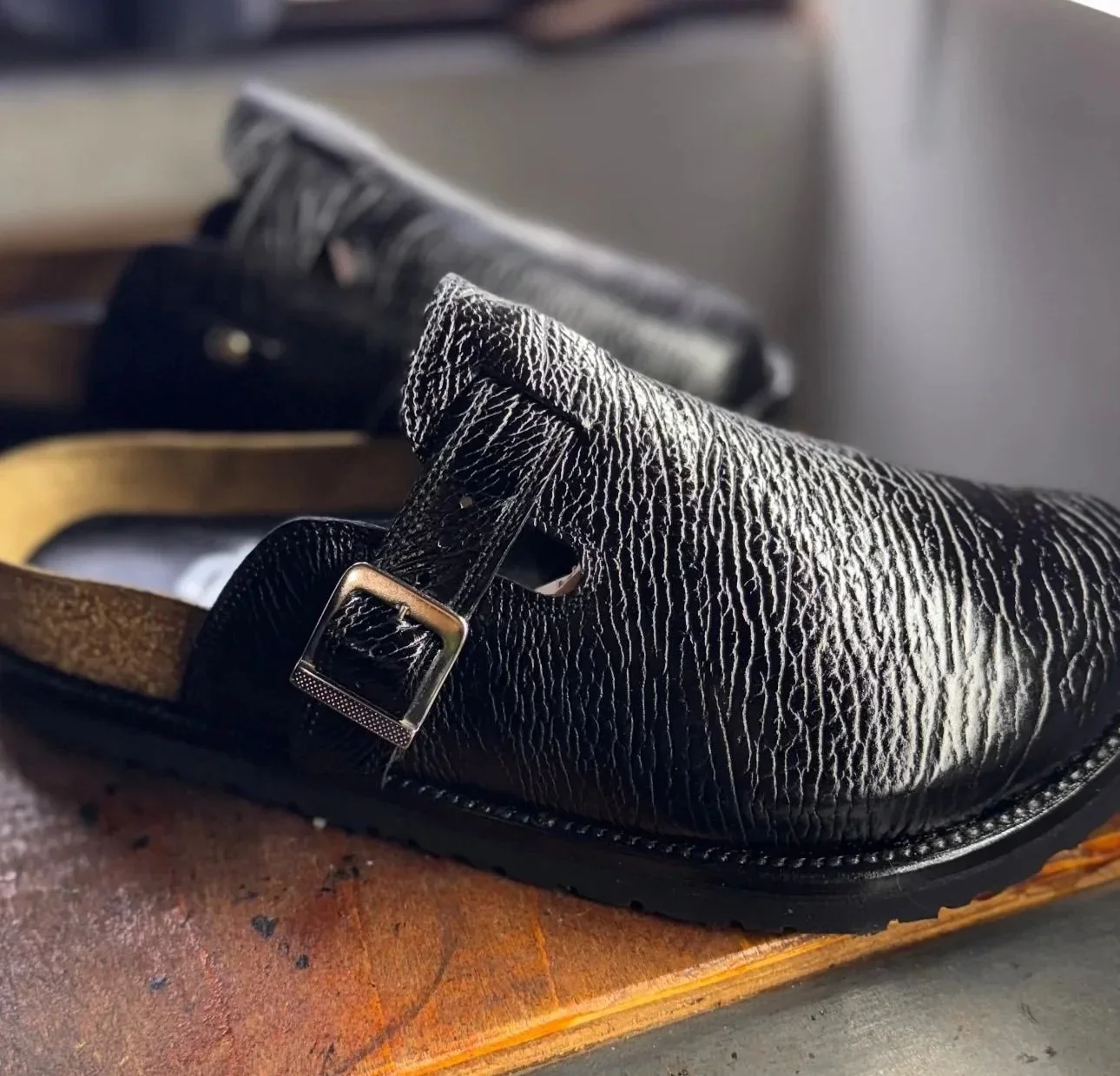From Function to Fissure: Collectible Design and the Weaponization of Material
The philosophy of Kintsugi—mending broken pottery with gold—serves as a visual metaphor for Post-Luxury Conceptual Functional Art (PLCFA), where value is anchored not in seamless perfection, but in the visible, weaponized history of material trauma and repair.
This report, commissioned under the interpretive framework of the Christopher Banks proprietary critical lexicon, presents an exhaustive analysis of the paradigm shift in collectible design: the movement From Function to Fissure. It argues that the contemporary luxury market is undergoing a structural shift away from "lazy luxury"—defined by mere aesthetic sheen and scarcity—toward Post-Luxury Conceptual Functional Art (PLCFA). In this new epoch, value is not derived from the utility of the object nor the fame of the signature, but from the weaponization of material: the deliberate use of substances, artifacts, and remnants that carry high Moral Weight, Trauma Provenance, and Political Capital, as quantified in The Material as Political Capital.
Through the lens of Critical Theory, specifically synthesizing Guy Debord’s Society of the Spectacle, Gregory Sholette’s Dark Matter, and the user’s proprietary semantic model, this document interrogates how artists like Samuel Levi Jones, Carlos Rolón, Gonçalo Mabunda, Sheila Hicks, and Teresa Lanceta utilize material fissures—tears, scars, skins, and debris—to disrupt the smooth surface of the commodity market. Crucially, the study concludes with a reflexive application of these metrics to the Objects of Affection Collection itself, establishing the Founder’s own work—specifically the Noir Sand Shark Mule—as the empirical anchor of the Anti-Commodity Commitment (ACC).
The Theoretical Architecture of Post-Luxury
The Crisis of the Spectacle and the Rise of Fissure
The Material Fissure: The craquelure on this historical surface functions as the material wound or "Fissure," where time, chemistry, and labor break the unified illusion of the Spectacle, allowing the material Real to re-emerge and disrupt the frictionless aesthetic.
The prevailing condition of the global art and design market has long been governed by what Guy Debord termed the Spectacle: a social relation among people, mediated by images, which produces a deep spiritual exhaustion, reducing life to "mere representation." The Spectacle operates through a systematic inversion of value, where specific concrete labor is structurally separated from the product, a failure mapped in Debord's Spectacle Meets Sholette's Missing Mass.
The "Fissure," as defined in this study, is the rupture in this smooth Spectacle. It is the re-emergence of the Real through the wound of the material. When the Spectacle seeks to present a unified, frictionless world of consumption—an act structurally enabled by the Aesthetic Neutrality of the White Cube, as detailed in The White Wall Paradox—the Fissure introduces the congealed labor and violence that underpin the system. The transition from Function to Fissure marks a move away from objects that serve toward objects that disrupt, shifting the function from ergonomic utility to ideological utility.
Dark Matter and the Invisibility of Labor
To understand the value of the Fissure, one must apply Gregory Sholette’s concept of Dark Matter. This "missing mass" is the invisible labor upon which the visible art world floats. In the context of PLCFA, the weaponization of material involves dragging this Dark Matter into the light. When an artist uses materials sourced from disaster zones or deconstructed institutional archives, they are making visible the "politics of invisibility." The "Fissure" is the portal through which Dark Matter enters the high-value market.
The distinction between Traditional Luxury and Post-Luxury (PLCFA) is based on:
Traditional Luxury relies on Erasure (labor is abstract/invisible).
Post-Luxury demands Hyper-Visibility (revealing the scar/effort). The source of value shifts from Scarcity & Brand to Moral Weight & Provenance, validating the invisible, informal, and activist labor that sustains the ecosystem.
The Proprietary Semantic Model: Defining Key Metrics
To quantify this shift, the study employs the Christopher Banks bespoke semantic model:
Moral Weight per Material (MWPM): Measures the density of ethical or political history embedded within the substance, increasing asset stability.
Anti-Commodity Commitment (ACC): Evaluates the structural mechanisms that resist the object's reduction to a speculative asset, creating barriers to frictionless trading.
Trauma Provenance: Replaces "Royal Provenance" with verifiable origins from sites of conflict, disaster, or systemic violence.
Functional Obligation: Denotes a mandatory, ongoing utility attached to the object, enforcing a continuous economic or social utility and preventing the object from becoming "mere representation."
This framework suggests that the market is moving toward a valuation model where Ethical Aura replaces Walter Benjamin’s traditional Aura. By embedding the object with a specific, non-replicable history of trauma and resistance, the artist reintroduces a presence in time and space that mechanical reproduction cannot duplicate, a necessity driven by the crisis of the Zero-Sum Aura examined in The Zero-Sum Aura: Why Digital Immortality Requires a Material Host.
The Manifesto of the Hand: Reclaiming the Political Economy of the Hand
The complex language of PLCFA—our Fissure, MWPM, and ACC—is simply a translation of the physical reality of the hand. The true entry point to this entire framework is the maker’s lived experience: the unique strain, the accumulated skill, and the conscious decision to introduce material friction into a world built for smooth exchange. The artisan’s commitment to the rough, the scarred, and the unique is the ultimate political act, proving that the value of an object is anchored not in its frictionless perfection, but in the irreducible proof of human effort and ethical intention.
The Weaponization of Materiality (The "Fissure")
The core thesis of this report is that material itself is being weaponized. Artists are no longer representing political ideas; they are constructing objects out of the debris of the political conflict itself.
Samuel Levi Jones: The Skin of the Institution
The Flayed Skin: Discerning Faculty utilizes the "skins" of institutional texts (law, medical books) to create a weaponized abstraction. The stitching and patches reveal the violence of the manual deconstruction, asserting the material's Moral Weight over the original textual authority.
The work of Samuel Levi Jones serves as the primary case study for Archival Inversion and the Deconstruction of Authority. Jones’s practice involves the physical "skinning" of institutional books—law, medical, and history—materials that codify the narratives of power.
The Process of Skinning: Jones commits violence against the texts by ripping the covers ("skins") from the binding. This act is a structural refusal of the textual authority. The Fissure here is the act of separation; the cover, now a flayed skin, is stitched into compositions that reveal the violence and manual process of deconstruction. This is a weaponized abstraction. It looks like formalist art, but its material substrate carries a heavy Moral Weight.
Carlos Rolón: The Trauma of the Tarp
The Index of the Event: Carlos Rolón transforms the scarred blue FEMA tarp—a ubiquitous symbol of disaster and failure—into a vibrant artwork. The underlying Trauma Provenance of the material is layered with beauty, anchoring the piece's value in its Functional Obligation to aid rebuilding efforts.
Carlos Rolón’s work with scarred industrial tarps from Puerto Rico represents the apex of Trauma Provenance and Functional Obligation.
The Materiality of Disaster: The blue FEMA tarp became the ubiquitous symbol of failure and survival. Rolón reclaims these scarred tarps and transforms them. The Fissure in Rolón’s work is literal: the rips and tears in the plastic fabric caused by the storm. These scars are the Index of the event and possess Very High Provenance Integrity (PI).
Functional Obligation as Value Anchor: Rolón commits a portion of sales (10-15%, typically $40k-$60k) to Protechos (roof rebuilding). This mechanism creates a circular ethical economy and establishes a Very High Anti-Commodity Commitment (ACC). The artwork is not just a representation of aid; it is aid.
The Alchemy of Violence – From Armament to Ornament
The most visceral manifestation of the Weaponization of Material is found in the transformation of actual lethal weaponry into domestic objects.
Gonçalo Mabunda and the Chair of the Warlord
The Dormant Chamber: Gonçalo Mabunda subverts the function of lethal armaments sourced from Mozambique's TAE project by transforming them into a regal throne. This object is a Thanatopolitical artifact, where the Fissure is the legal and material gray zone of the silenced gun, embodying the weaponization of material.
Gonçalo Mabunda’s work consists of thrones and masks constructed entirely from decommissioned weapons (AK-47s, rocket launchers) sourced from the Transformação de Armas em Enxadas (TAE) project in Mozambique. Mabunda subverts the biblical prophecy of swords into ploughshares by turning the sword into a throne, a metonymy for power seated upon violence. The throne is a Thanatopolitical object—governance through death, as analyzed in Biopolitics of the Artifact.
A profound insight is the legal precariousness of the object. A Mabunda chair is not a metaphor for a weapon; it is a weapon, merely dormant. The Fissure here is the legal gray zone between Cultural Artefact and Contraband, validating the Weaponization of Material thesis.
The Thread as Resistance – Fiber, Time, and Labor
The Architecture of the Thread: Sheila Hicks’s monumental textile works, such as Saffron Sentinel, impose Slow Labor upon the viewer. The sheer volume of material and visible texture creates a temporal Fissure, disrupting the instant consumption of the digital image and resisting the velocity of Circulationism.
While steel and skin represent the hard weaponization of material, the soft weaponization of textiles offers a different, yet equally potent, form of Structural Refusal.
Sheila Hicks: The Architecture of the Thread
Sheila Hicks’s work challenges the Art/Craft binary. Her installations are reservoirs of time, demanding a haptic engagement—a visual touching—in an era of digital dematerialization. The Fissure here is temporal, as the textile resists the instant consumption of the image, disrupting the velocity of Circulationism.
Teresa Lanceta: Weaving as Open Source
Teresa Lanceta’s practice engages with Middle Atlas weavers, positing that the textile is a collective and silent medium for permanence. The Fissure she introduces is the disruption of the Western concept of Authorship. In the PLCFA model, Lanceta’s work scores high on Ethical Aura because it functions as a repository of communal memory rather than individual ego.
The Founder's Corollary: The Noir Sand Shark Mule as Case Study
The Fissure as the Void: The Noir Sand Shark Mule serves as the empirical anchor of the Anti-Commodity Commitment (ACC). Its rough, micro-topography provides Haptic Resistance, refusing the frictionless perfection of the "Smooth" digital aesthetic and manifesting the Fissure through absence of performance.
Material Strategy: The Resistance to Smoothness
The Noir Sand Shark Mule serves as the definitive internal case study for the Haptic Resistance metric. In the age of the Smooth—the aesthetic of the digital, the optimized, and the frictionless—the Mule introduces a violent texture. The Noir Sand Shark leather is chosen for its micro-topography of fine placoid grains. This surface functions as a Fissure in the digital spectacle because it resists the touch-screen aesthetic.
The Void as Anti-Spectacle
The Fissure in the Founder’s work is the Void. It operates through Itutu (Coolness/Restraint), creating a fissure through absence. This aligns with the Anti-Commodity Commitment (ACC) by refusing to function as a recognizable status symbol. The subtle monogram reinforces the Intangible Provenance that value is custodial, not performative.
The Anti-Commodity Commitment (ACC) and the Economics of Ethical Commodification
The unifying thread across Jones, Rolón, Mabunda, and Banks is the Anti-Commodity Commitment (ACC).
The Mechanism of Structural Refusal
The ACC functions through Structural Refusal:
For Rolón, the refusal is financial: a percentage must be taken out of the art market.
For Jones, the refusal is semiotic: the text must be destroyed.
For Banks, the refusal is haptic: the object must be rough, refusing the smooth digital aesthetic of the present.
The End of Lazy Luxury
The study From Function to Fissure concludes that the era of lazy luxury is collapsing under the weight of its own vacuity. Post-Luxury Conceptual Functional Art (PLCFA) has emerged as the dominant asset class of the intellectual elite.
Final Recommendation: For the collector, the directive is clear: Invest in the Fissure. Seek objects that bleed history. Verify the Anti-Commodity Commitment. Measure the Moral Weight per Material. The future of value lies in the rough, scarred, and weaponized fragments of the Real.
Metrics of Valuation: The Christopher Banks Scorecard
The Christopher Banks Scorecard provides the final quantitative metric for the Fissure theory, proving it can be operationalized as collectible art. This valuation confirms that value is locked into the material breach: Samuel Levi Jones initiates an Archival Inversion by using Deconstructed Books, manifesting the Fissure as Flayed Skin through the violent removal of the text. Carlos Rolón uses Scarred FEMA Tarps to establish Functional Obligation, in which the Fissure is the literal Tear/Scar, serving as an index of the storm’s trauma. The most visceral form is seen in Gonçalo Mabunda’s use of Decommissioned Weapons to prove Trauma Provenance, creating a Fissure defined as the Dormant Chamber of the silenced gun. In the soft sciences of resistance, Sheila Hicks employs Wrapped Fiber and Thread to impose Slow Labor, creating a Fissure of Unravelling or temporal disruption. Similarly, Teresa Lanceta utilizes Collective Weaving to generate an Ethical Aura, presenting the Fissure as an Open Source repository of communal memory. Finally, the Founder’s own contribution to the field, the Noir Sand Shark Mule, employs Noir Sand Shark Leather to achieve Haptic Resistance, manifesting the Fissure as the Void—the rough, placoid grain resisting the digital Smooth. This final entry validates the scorecard itself, proving that the theory of Fissure can be operationalized into a One Original phygital artifact that structurally resists the Spectacle's optimization.
Authored by Christopher Banks, Anthropologist of Luxury & Critical Theorist. Office of Critical Theory & Curatorial Strategy, Objects of Affection Collection.







